
The 130s was a decade that ran from January 1, 130, to December 31, 139.
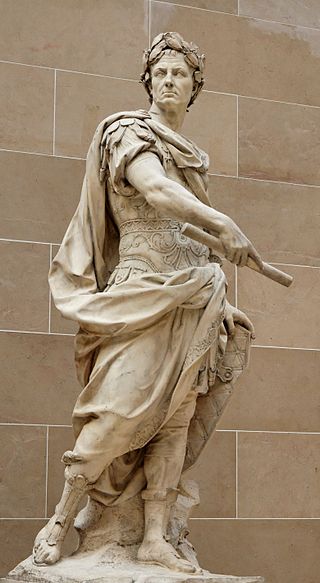
The following outline is provided as an overview of and topical guide to ancient Rome:

Antinous, also called Antinoös, was a Greek youth from Bithynia and a favourite and lover of the Roman emperor Hadrian. Following his premature death before his 20th birthday, Antinous was deified on Hadrian's orders, being worshipped in both the Greek East and Latin West, sometimes as a god and sometimes merely as a hero.

The art of Ancient Rome, and the territories of its Republic and later Empire, includes architecture, painting, sculpture and mosaic work. Luxury objects in metal-work, gem engraving, ivory carvings, and glass are sometimes considered to be minor forms of Roman art, although they were not considered as such at the time. Sculpture was perhaps considered as the highest form of art by Romans, but figure painting was also highly regarded. A very large body of sculpture has survived from about the 1st century BC onward, though very little from before, but very little painting remains, and probably nothing that a contemporary would have considered to be of the highest quality.
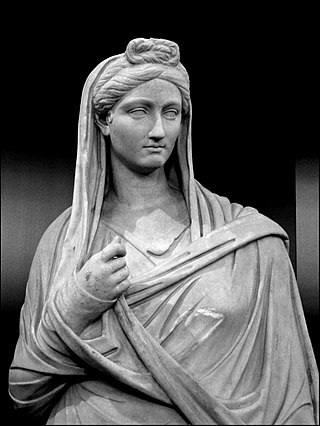
Vibia Sabina (83–136/137) was a Roman Empress, wife and second cousin once removed to the Roman Emperor Hadrian. She was the daughter of Matidia and suffect consul Lucius Vibius Sabinus.

Hadrian's Villa is a UNESCO World Heritage Site comprising the ruins and archaeological remains of a large villa complex built around AD 120 by Roman Emperor Hadrian near Tivoli outside Rome.

The Capitoline Museums are a group of art and archaeological museums in Piazza del Campidoglio, on top of the Capitoline Hill in Rome, Italy. The historic seats of the museums are Palazzo dei Conservatori and Palazzo Nuovo, facing on the central trapezoidal piazza in a plan conceived by Michelangelo in 1536 and executed over a period of more than 400 years.

The Mausoleum of Augustus is a large tomb built by the Roman Emperor Augustus in 28 BC on the Campus Martius in Rome, Italy. The mausoleum is located on the Piazza Augusto Imperatore, near the corner with Via di Ripetta as it runs along the Tiber. The grounds cover an area equivalent to a few city blocks nestled between the church of San Carlo al Corso and the Museum of the Ara Pacis. After being closed for fourteen years to perform restoration work, the mausoleum was reopened to the public in March 2021.

The study of Roman sculpture is complicated by its relation to Greek sculpture. Many examples of even the most famous Greek sculptures, such as the Apollo Belvedere and Barberini Faun, are known only from Roman Imperial or Hellenistic "copies". At one time, this imitation was taken by art historians as indicating a narrowness of the Roman artistic imagination, but, in the late 20th century, Roman art began to be reevaluated on its own terms: some impressions of the nature of Greek sculpture may in fact be based on Roman artistry.

The Gardens of Sallust was an ancient Roman estate including a landscaped pleasure garden developed by the historian Sallust in the 1st century BC. It occupied a large area in the northeastern sector of Rome, in what would become Region VI, between the Pincian and Quirinal hills, near the Via Salaria and later Porta Salaria. The modern rione is now known as Sallustiano.
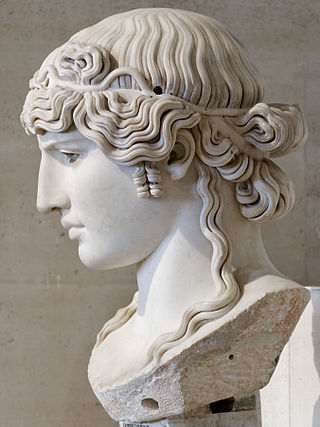
The Antinous Mondragone is a 0.95-metre high marble example of the Mondragone type of the deified Antinous. This colossal head was made sometime in the period between 130 AD to 138 AD and then is believed to have been rediscovered in the early 18th century, near the ruined Roman city, Tusculum. After its rediscovery, it was housed at the Villa Mondragone as a part of the Borghese collection, and in 1807, it was sold to Napoleon Bonaparte; it is now housed in the Louvre in Paris, France.

Caesar Augustus, known as Octavian before he became emperor, was the first and among the most important of the Roman Emperors. As such, he has frequently been depicted in literature and art since ancient times.

The Capitoline 'Antinous' is a marble statue of a young nude male found at Hadrian's Villa, Tivoli, during the time when Conte Giuseppe Fede was undertaking the earliest concerted excavations there. It was bought before 1733 by Alessandro Cardinal Albani. To contemporaries it seemed to be the real attraction of his collection. The statue was bought by Pope Clement XII in 1733 and went on to form the nucleus of the Capitoline Museums, Rome, where it remains. The restored left leg and the left arm, with its unexpected rhetorical hand gesture, were provided by Pietro Bracci. In the 18th century it was considered to be one of the most beautiful Roman copies of a Greek statue in the world. It was then thought to represent Hadrian's lover Antinous owing to its fleshy face and physique and downturned look. It was part of the artistic loot taken to Paris under the terms of the Treaty of Tolentino (1797) and remained in Paris 1800–15, when it was returned to Rome after the fall of Napoleon.

The Antinous Farnese is a marble sculptural representation of Antinous that was sculpted between 130 and 137 CE. Antinous was the lover to Roman Emperor Hadrian; the emperor who, after Antinous's death, perpetuated the image of Antinous as a Roman god within the Roman empire. This sculpture is a part of the Roman Imperial style and was sculpted during a revival of Greek culture, initiated by Hadrian's philhellenism. Its found spot and provenance are unknown, but this sculpture is currently a part of the Farnese Collection in the Naples National Archaeological Museum.

The Pasquino Group is a group of marble sculptures that copy a Hellenistic bronze original, dating to ca. 200–150 BCE. At least fifteen Roman marble copies of this sculpture are known. Many of these marble copies have complex artistic and social histories that illustrate the degree to which improvisatory "restorations" were made to fragments of ancient Roman sculpture during the 16th and 17th centuries, in which contemporary Italian sculptors made original and often arbitrary and destructive additions in an effort to replace lost fragments of the ancient sculptures.

Sosus of Pergamon was a Greek mosaic artist of the second century BC. He is the only mosaic artist whose name was recorded in literature. After the conquests of Alexander the Great, the Greeks of major centers such as Pergamon and Alexandria displayed their wealth in decorations that included mosaics.

Augustan and Julio-Claudian art is the artistic production that took place in the Roman Empire under the reign of Augustus and the Julio-Claudian dynasty, lasting from 44 BC to 69 AD. At that time Roman art developed towards a serene "neoclassicism", which reflected the political aims of Augustus and the Pax Romana, aimed at building a solid and idealized image of the empire.
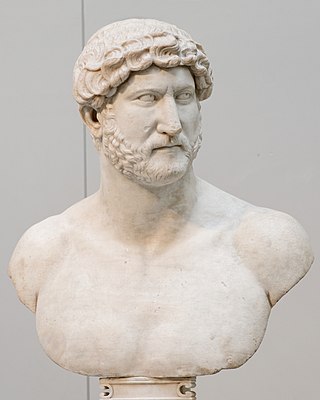
A bust of Hadrian, the second-century Roman emperor who rebuilt the Pantheon and constructed the Temple of Venus and Roma, was formerly displayed in Pope Sixtus V's Villa Montalto and is now displayed at the British Museum in London. The bust is one of the Townley Marbles collected by Charles Townley (1737–1805) and sold by his heir Peregrine Edward Towneley at a reduced price to the British Museum in 1805. Unlike most busts of Hadrian and other emperors, it shows him in heroic nudity. The bust was found in Rome and is carved from Greek marble.
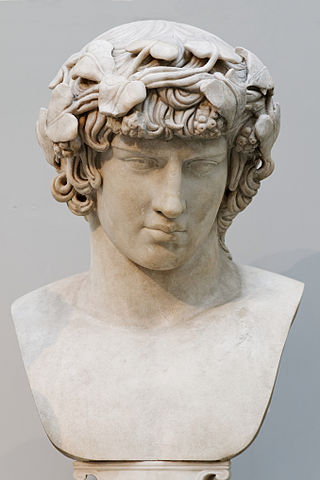
The Townley Antinous is a marble portrait head of the Greek youth Antinous, the boyfriend or lover of the Roman Emperor Hadrian, wearing an ivy wreath. It is now part of the collection of London's British Museum, and was part of the Townley Marbles. Only the head is ancient, once belonging to statue dating from c. 130–140 and the late reign of Hadrian ; the bust is a modern addition. The portrait probably shows the youth as Dionysus–Bacchus. The bust was acquired along with the rest of the antiquities collected by 18th-century Grand Tourist and Fellow of the Royal Society, Charles Townley. A drawing of the bust attributed to Vincenzo Pacetti is also in the museum's collection.



















